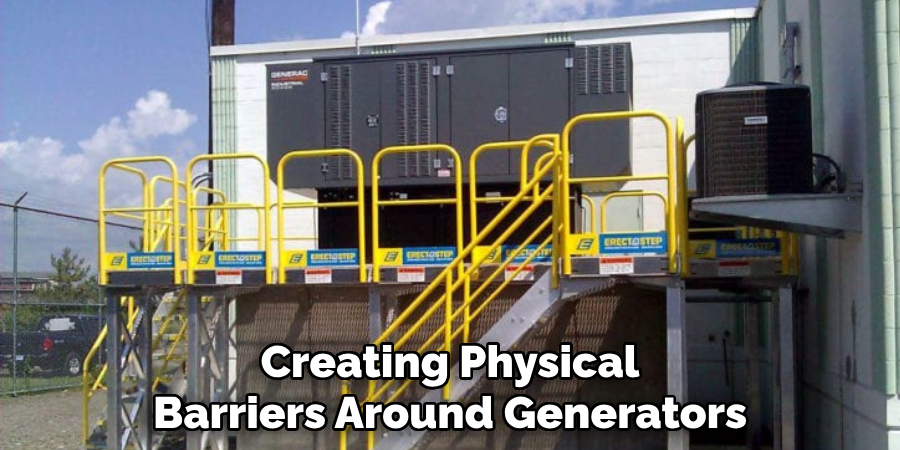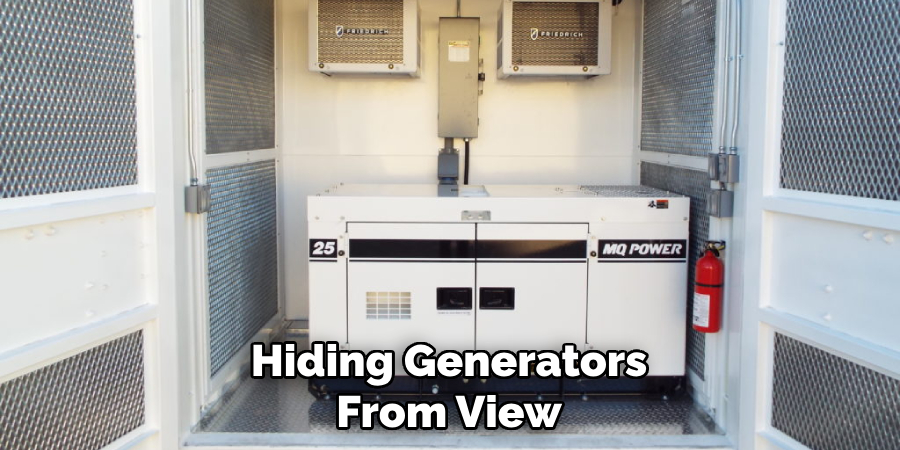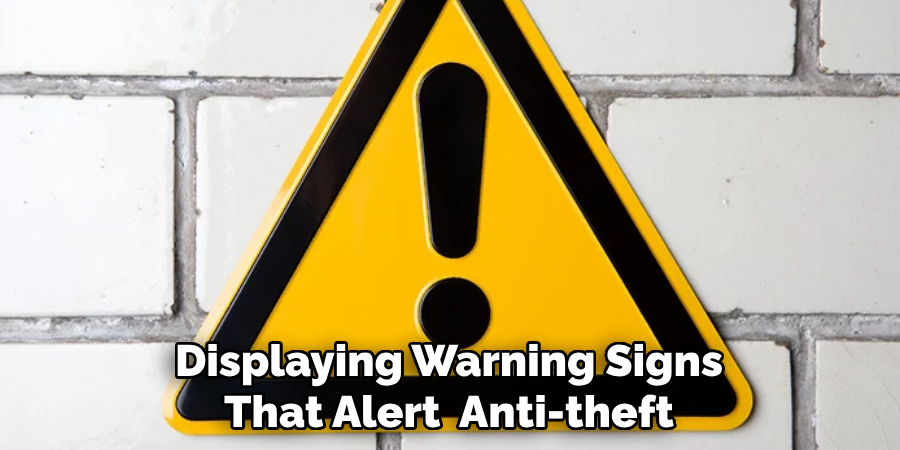In a world where reliability on portable power sources is ever-increasing, understanding how to secure a generator from being stolen. In a world where the reliability of portable power sources is ever-increasing, understanding how to secure a generator from being stolen becomes crucial for both individuals and businesses alike.

By their portable and valuable nature, generators often become targets for theft, posing not only a financial loss but also potentially disrupting operations and activities reliant on their power. The importance of securing generators against theft cannot be overstated.
A stolen generator can mean the difference between normalcy and hardship during power outages caused by natural disasters or utility work. Therefore, this section aims to provide an overview of strategies designed to safeguard your generator.
From physical security measures to community vigilance, we will explore various ways to protect these essential assets, ensuring they remain where they are needed most.
Assessing Security Risks
When aiming to understand how to secure a generator from being stolen, assessing the potential risks that make generators attractive to thieves is pivotal. Generators are particularly vulnerable due to their high value, portability, and often the necessity they serve, making them prime targets for theft.
A. Understanding Common Theft Risks
The primary factors contributing to generator theft include their location and visibility. Generators placed in secluded, poorly lit areas or in locations easily accessed by outsiders without drawing attention provide ideal conditions for theft.
Additionally, generators left unattended, particularly in areas known for higher crime rates or when they are not in use, are at increased risk. The visibility of a generator, whether from the street or neighboring properties, can also play a significant role in its vulnerability to being stolen.

B. Evaluating Property Security
A thorough assessment of existing security measures and potential weaknesses is essential for protecting your generator. This includes evaluating how generators are stored or locked when not in use, the quality of locks and security devices, and any surveillance measures in place, such as cameras or security lighting.
Identifying areas where security can be strengthened—whether through better lighting, improved lock systems, or strategic positioning of the generator—can significantly reduce theft risks.
C. Considering Theft Trends
Attention to local theft incidents and trends is crucial for effectively adapting your security strategies. By understanding how and when generators are typically stolen in your area, you can implement targeted measures to counteract these trends.
This might involve adjusting the times when generators are used or stored, enhancing security measures during peak periods of theft, or even collaborating with local law enforcement to increase patrols or awareness in your vicinity. Being informed about the local landscape of generator theft can empower you with the knowledge to better protect your assets.
Physical Security Measures on How to Secure a Generator from Being Stolen
Implementing robust physical security measures is a foundational step in learning how to secure a generator from being stolen. These measures act as a deterrent against potential thieves and significantly lower the chance of theft through strategic prevention tactics.
A. Locking Mechanisms
One of the most effective ways to secure a generator is by using heavy-duty padlocks, chains, or cables that are difficult to cut through. These should be attached to fixed objects or immovable anchor points, ensuring that the generator cannot be easily taken without considerable effort and noise.
It’s important to select locks resistant to picking, drilling, and rust, enhancing their durability and security level.
B. Enclosures and Barriers
Creating physical barriers around generators can substantially prevent unauthorized access. Installing generator enclosures made from tough, durable materials hides the generator from plain sight and adds an extra layer of protection.

Fences and barriers further restrict access, especially if they are topped with barbed wire or spikes and are complemented by secure gates. This method deters theft and protects the generator from environmental elements.
C. Anti-Theft Devices
Equipping your generator with modern anti-theft devices can provide another layer of security. Alarm systems can be activated by unauthorized movement or tampering, drawing immediate attention to the theft attempt. GPS trackers embedded within the generator allow for real-time tracking, significantly increasing the chances of recovery after a theft.
Motion-activated lights serve as an effective deterrent, illuminating the area around the generator when movement is detected, which can scare off potential thieves before they attempt theft. Together, these devices form a comprehensive defense mechanism that not only deters but also helps detect and recover stolen generators.
By integrating these physical security measures, you can significantly enhance the safety of your generator. Each of these strategies serves as a critical component in a multi-layered defense system designed to keep your generator secured and significantly reduce the risks associated with theft.
Location and Placement
Proper placement and secure anchoring of generators are pivotal in deterring theft and ensuring their safety. Thoughtful consideration of the location contributes to the generator’s physical protection and leverages environmental and structural elements to enhance security measures already in place.

A. Concealed Placement
Hiding generators from view or concealing them behind structures, foliage, or secure fencing can significantly reduce the theft risk by making them less attractive to potential thieves. When a generator is out of sight, it’s out of mind for those looking for easy targets.
Additionally, using natural cover, such as thick bushes or trees, or architectural elements like walls or sheds can further obscure the generator from public view. It’s crucial, however, to ensure that these hiding spots do not impede the generator’s ventilation or operation.
B. Secure Anchoring
Securing generators to concrete slabs, concrete blocks, or other immovable objects is a highly effective method to prevent theft. This approach involves physically anchoring the generator, making it extremely difficult to move without significant effort and noise.
Using heavy-duty chains, cables, and padlocks in conjunction with strong anchor points adds a robust layer of security. When a generator is firmly anchored, the time and resources required to steal it increase dramatically, often deterring thieves from attempting it.
This practice is especially important in areas where the generator may be visible or when other concealment options are limited.
C. Visible Deterrents
The strategic use of visible deterrents plays a crucial role in discouraging potential thieves and aiding in identifying and prosecuting perpetrators. Displaying warning signs that alert to the presence of anti-theft measures, such as surveillance cameras or GPS tracking, can make thieves think twice before targeting your generator.

The installation of visible security cameras serves as a deterrent and provides crucial evidence in the event of theft. Marking generators with property identification numbers or using ultraviolet markers can help recover stolen property and act as an additional deterrent.
These visible signs of security communicate to potential thieves that the generator is well-protected and that stealing it would pose significant risks.
By carefully considering the location and placement of generators, employing concealment strategies, secure anchoring, and visible deterrents, you can greatly enhance the security of these vital assets. Each of these measures provides a layer of defense, contributing to a comprehensive security strategy that minimizes theft risk.
Operational Security Measures
Operational security measures involve safeguarding generators’ physical aspects and ensuring the processes surrounding their operation and maintenance are secure. These steps are crucial for preventing theft and ensuring the longevity and reliability of the equipment.
A. Regular Maintenance
Regular maintenance checks are vital to keep generators in optimal working condition. These checks can identify potential vulnerabilities that could make a generator more susceptible to theft, such as exposed or weak points that thieves can leverage.
Routine inspections and maintenance ensure that any signs of tampering or wear and tear are addressed promptly, reducing the risk of breakdowns or malfunctions that could attract unwanted attention. Regularly servicing generators also reinforces the owner’s presence and vigilance, thereby acting as an indirect deterrent to potential thieves.
B. Fuel and Component Security
Storing fuel and essential components in secure areas is imperative to prevent theft and vandalism. Fuel is a valuable commodity and, if easily accessible, can be an attractive target for thieves. Equally, generator components can be sold for a high price on the black market.
Lockable fuel caps and securely storing spare parts in locked containers or rooms protect these assets and ensure the generator remains operational and less attractive to criminals. Implementing strict control measures on who has access to these resources further minimizes the risk of internal theft or sabotage.
C. Operational Awareness
Being vigilant and monitoring generator usage patterns is critical in identifying and responding to suspicious activities. Operational awareness includes understanding the typical usage schedule of the generator and being alert to any deviations from this pattern, such as unexpected activations or shutdowns, which could indicate tampering or unauthorized use.
Encouraging staff and nearby residents to report unusual behavior or unfamiliar individuals near the generator can also be an effective strategy for deterring theft. Implementing a logbook or digital tracking system for recording when the generator is used and by whom can help in quickly detecting and addressing security breaches.
Employing these operational security measures enhances generator systems’ overall safety and integrity. Regular maintenance ensures equipment is in good working condition and less appealing to thieves.
Secure storage of fuel and components protects valuable assets, while operational awareness creates an environment that is actively monitored and more secure against potential threats. Together, these measures form a comprehensive strategy for safeguarding generators against theft and unauthorized access.
Community Engagement and Vigilance
Community engagement and vigilance play pivotal roles in enhancing generator security and deterring theft. By fostering a collaborative approach to safety and security, individuals and organizations can significantly reduce the likelihood of crime in their vicinity.
A. Neighborhood Watch Programs
Participating in Neighborhood Watch Programs or community safety initiatives is a powerful method to increase surveillance and deter theft. These programs foster a sense of collective responsibility and active involvement in community safety, essentially acting as an extended network of guardians.
By keeping an eye out for suspicious activities and sharing information about potential threats, community members can prevent theft before it occurs. These programs often involve regular meetings with local law enforcement to discuss concerns and strategies, enhancing the community’s overall security posture.
B. Reporting Suspicious Activity
Encouraging community members to report suspicious behavior or theft incidents to authorities or property owners is crucial for prompt and effective response. Awareness campaigns can educate the community on the importance of reporting and the best ways to ensure people know who to contact and what information is helpful.
Timely reporting can aid in the rapid recovery of stolen items and apprehend thieves, dissuading further criminal activity.

C. Collaboration with Law Enforcement
Working closely with local law enforcement agencies to share information and coordinate responses is critical in combating theft. Establishing a direct line of communication between community members, neighborhood watch programs, and the police enhances the effectiveness of theft prevention efforts.
It allows for quickly disseminating information regarding theft trends, suspicious activities, and security advisories. Law enforcement agencies can also provide valuable training and resources to community members, equipping them with the knowledge and tools needed to protect their properties and assist in law enforcement efforts.
By weaving these elements into the community fabric, individuals and organizations alike can create a more secure environment, significantly lowering the incidence of generator theft and other crimes. Engagement, vigilance, and collaboration stand as the pillars of a successful community-driven approach to security.
Legal and Ethical Considerations
Implementing security measures to safeguard generators and other assets requires operating within a framework of legal and ethical guidelines. These principles ensure that efforts to deter theft and unauthorized access do not infringe upon the rights of others or contravene local laws.
A. Compliance with Regulations
Ensuring compliance with local laws and regulations regarding property security and theft prevention measures is fundamental. This includes obtaining any necessary permits for surveillance equipment, adhering to privacy laws when monitoring public or shared spaces, and implementing security enhancements that meet local safety standards.
Compliance protects against legal repercussions and demonstrates a commitment to lawful and responsible conduct in property management.

B. Respect for Property Rights
Respecting the property rights of others is paramount. This involves avoiding unauthorized use or access to generators or equipment owned by others. Security strategies should be designed to safeguard assets without overstepping boundaries or infringing on the rights of neighboring properties. Establishing clear demarcations and gaining consent before installing surveillance or security devices on shared property lines are examples of practices that honor these rights.
C. Ethical Use of Force
Exercising restraint and ethical judgment is essential when physical security measures or personnel are employed. Using force in protecting property should always be proportionate, necessary, and the last resort.

Establishing guidelines for the ethical use of force — including verbal de-escalation techniques, non-lethal methods of defense, and clear protocols for emergency situations — ensures that the safety and rights of all individuals are considered.
This approach not only prevents potential harm but also upholds the moral integrity of security practices. Navigating the balance between effective security and ethical considerations is a complex yet vital aspect of theft prevention. By adhering to these legal and ethical principles, organizations and individuals can ensure that their efforts to protect assets are both effective and just.
Frequently Asked Questions
Below are some common questions related to safeguarding generators and other valuable assets from theft, along with their answers.
A. What Is the Most Effective Way to Secure a Portable Generator?
The most effective way to secure a portable generator involves a combination of measures, including using heavy-duty locks and chains, installing motion-activated lights or alarms, and whenever possible, storing the generator in a locked shed or garage when not in use.
B. Can Surveillance Cameras Deter Generator Theft?
Yes, surveillance cameras can act as a significant deterrent to potential thieves. Visible cameras not only record any suspicious activity but also demonstrate to would-be criminals that the property is monitored. Cloud storage options for surveillance footage can also aid in the recovery of stolen items and prosecution of the offenders.
C. How Can I Report a Stolen Generator?
If your generator is stolen, report the theft immediately to the local police department. Provide them with any details of the incident, including the make, model, serial number of the generator, and any surveillance footage or evidence you have. It’s also wise to report the theft to your insurance company if the generator is insured.
D. Are Gps Trackers Effective in Recovering Stolen Generators?
GPS trackers can significantly increase the chances of recovering a stolen generator. These devices, when installed in a hidden part of the generator, allow for real-time tracking of the equipment’s location, making it possible for law enforcement to quickly locate and recover it.
E. How Can Community Engagement Help Prevent Generator Theft?
Community engagement fosters a proactive approach to security, where members of the community lookout for each other. Through neighborhood watch programs and regular communication, communities can quickly disseminate information about suspicious activities, fostering an environment where thieves are less likely to operate successfully.
Adhering to these guidelines and strategies can substantially mitigate the risk of generator theft and ensure the security of other valuable assets.
Conclusion
In this guide, we’ve explored various strategies and techniques essential for securing generators against theft. Each method plays a crucial role in protecting these valuable assets from enhancing physical security measures with locks, alarms, and secure enclosures to fostering operational vigilance and engaging with the community.
We’ve highlighted the importance of being proactive in implementing security measures and maintaining vigilance to deter potential thieves and safeguard property assets effectively.
Understanding how to secure a generator from being stolen is pivotal for anyone relying on these power sources. Applying the outlined approaches can significantly reduce the risk of theft and ensure the continuity of power for your needs.
We hope this guide offers peace of mind and bolsters your efforts in securing your generator, providing you with the confidence that comes from taking informed and effective steps toward protection.
About
Safety Fic is a distinguished figure in the world of Diy design, with a decade of expertise creating innovative and sustainable Diy solutions. His professional focus lies in merging traditional craftsmanship with modern manufacturing techniques, fostering designs that are both practical and environmentally conscious. As the author of diy, Safety Fic delves into the art and science of Safety Fic-making, inspiring artisans and industry professionals alike.
Education RMIT University
(Melbourne, Australia) Associate Degree in Design (Safety Fic) Focus on sustainable design, industry-driven projects, and practical craftsmanship. Gained hands-on experience with traditional and digital manufacturing tools, such as CAD and CNC software.
Nottingham Trent University
(United Kingdom) Bachelor’s in diyfastly.com and Product Design (Honors) Specialized in product design with a focus on blending creativity with production techniques. Participated in industry projects, working with companies like John Lewis and Vitsoe to gain real-world insights.
Publications and Impact
In diy, Safety Fic his insights on indoor design processes, materials, and strategies for efficient production. His writing bridges the gap between artisan knowledge and modern industry needs, making it a must-read for both budding designers and seasoned professionals.
